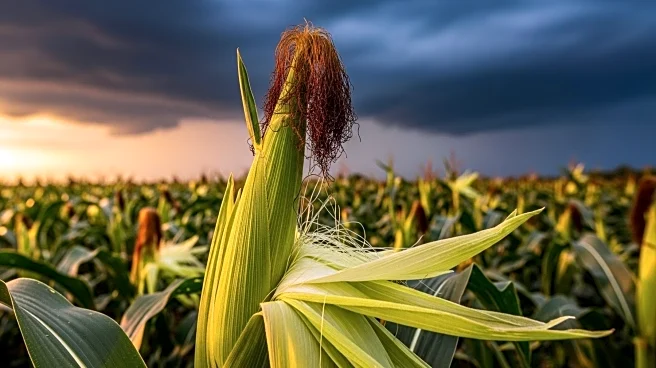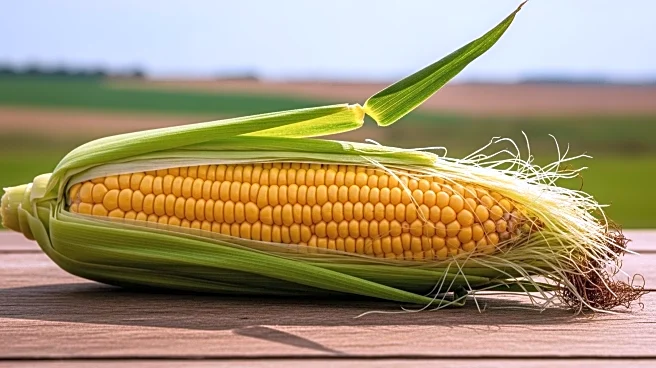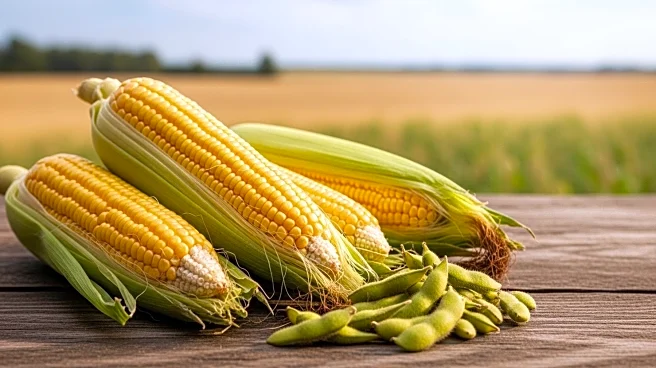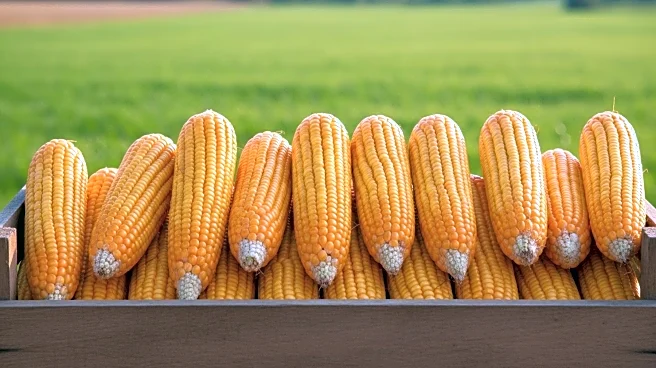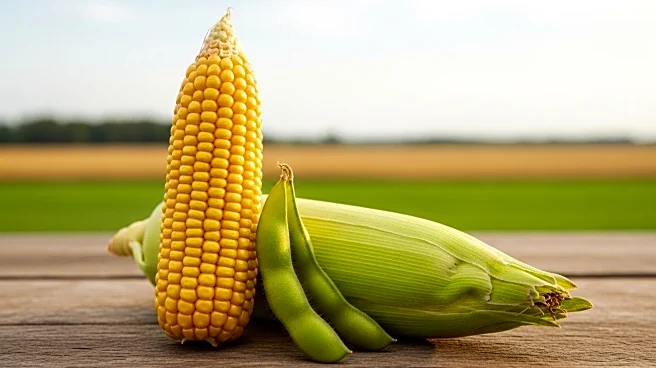What is the story about?
What's Happening?
Corn farmers in the U.S. Midwest are grappling with severe outbreaks of fungal diseases, notably southern rust and tar spot, which threaten to reduce yields of what was projected to be a record-large crop. The USDA had forecasted a yield of 188.8 bushels per acre, but analysts expect this to be revised down due to the disease impact. Southern rust, which typically arrives too late to cause significant damage, reached Iowa by mid-July, creating ideal conditions for its spread. The disease, along with tar spot, attacks corn leaves, disrupting photosynthesis and leading to smaller kernels. Farmers have applied fungicides to mitigate damage, but the cost is burdensome amid low grain prices and rising input costs.
Why It's Important?
The outbreak of corn diseases poses a significant risk to the U.S. agricultural sector, potentially reducing the supply of a key crop and impacting farmers' profitability. With grain prices already low, farmers are under pressure to maximize yields to cover costs, and the disease outbreaks threaten this goal. The situation highlights vulnerabilities in the agricultural supply chain and the need for effective disease management strategies. The potential reduction in corn yields could also affect global markets, given the U.S.'s role as a major corn producer, influencing prices and availability worldwide.
What's Next?
Farmers will continue to monitor and manage disease outbreaks as the harvest season progresses. The full extent of yield losses will become clearer as crops are brought in from the fields. Agricultural experts and policymakers may focus on developing more resilient crop varieties and improving disease forecasting and management practices. The situation may also prompt discussions on the economic support needed for farmers facing such challenges, including potential subsidies or insurance options to mitigate financial losses.
AI Generated Content
Do you find this article useful?
